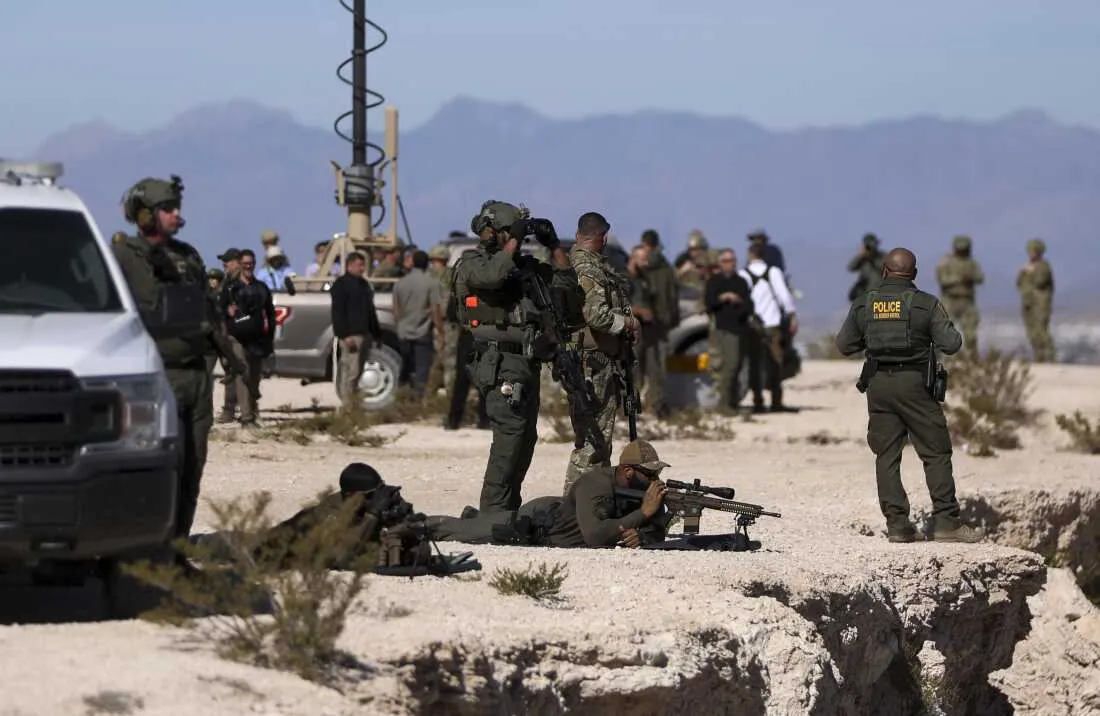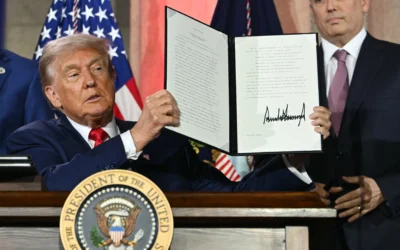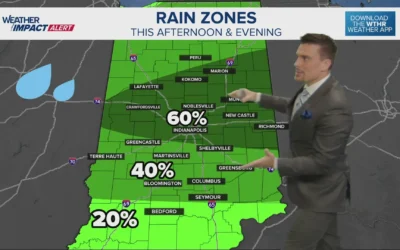US Troop Deployment at the Mexico-US Border: A Shift Towards Militarization
The deployment of US troops at the Mexico-US border has reached a new level of militarization, stirring debates on the effectiveness and implications of this approach. With troops now stationed at newly designated militarized zones, it is crucial to understand the motivations behind this increase in military presence, the consequences this might have on border security and relationships with Mexico, and the role of law enforcement versus military action in immigration enforcement.
Context of Militarization
Historically, the US-Mexico border has been a focal point for immigration and security discussions, with heightened concerns over drug trafficking, human smuggling, and border crossings. The deployment of military personnel, particularly under controversial policies during the Trump administration, signaled a significant shift towards a more aggressive approach to border security.
Photos circulating online have depicted troops in full military gear, stationed near fences and checkpoints, and performing operations alongside border patrol agents. These images highlight a more pronounced visible military presence, as the Pentagon has expanded the scope and scale of its activities along the border. In this latest phase, US troops are not just providing logistical support but are now participating in direct enforcement actions.
The Legal and Ethical Gray Area
The expansion of the military’s role in domestic law enforcement raises a multitude of legal and ethical questions. The Posse Comitatus Act restricts the use of military personnel for domestic law enforcement purposes, suggesting strict limitations on how and when the military can engage in local policing efforts. Yet, the current deployment raises concerns about what constitutes ‘support’ versus ‘direct engagement.’
Military officials maintain that their role is to assist and support border patrol agents, emphasizing that troops are not authorized to engage directly with civilians or make arrests without clear directives. However, the line between support and engagement can often become blurred in high-tension environments, leading to potential violations of civil liberties.
‘Deterrence is Boring’
As some analysts have pointed out, the concept of deterrence—particularly in undemocratic contexts—can often be seen as boring, as it revolves around prevention rather than direct engagement. The phrase ‘Deterrence is boring’ resonates with communities along the border that have become accustomed to military presence yet question its effectiveness over time. Many residents express frustration over ongoing military actions while the root causes of immigration and violence remain unaddressed.
The military’s involvement at the border exemplifies a paradox: increased military presence might yield short-term strength and security, but it often does little to assuage the underlying issues that prompt migration in the first place. For instance, economic instability and violence in Central America continue to drive individuals northward in search of better opportunities and safety.
Bipartisan Concerns
As the US military further entrenches itself in border operations, concerns about the potential ramifications stretch across party lines. Some lawmakers argue that this approach could lead to militarization of civilian areas, prompting fears about civil rights violations and community relations. Independent studies have shown that communities with heavy military presence often experience a breakdown in trust with local law enforcement.
While supporters argue that military involvement would lead to decreased crime rates and a more secure border, critics maintain that such strategies have historically been flawed. The military is not typically trained for civilian interactions; the tactics used to confront external threats may not translate effectively into environments requiring de-escalation and sensitivity.
The Border Patrol and Military Collaboration
The collaboration between U.S. Border Patrol and the military is a point of growing interest and concern. While there is a shared goal of ensuring border security, the methods employed and the nature of engagements pose the question of whether it is necessary to rely on military might to achieve these objectives. The humanitarian issues surrounding immigration, including asylum seekers and family separations, complicate the narrative further.
The narrative within the military is intensely focused on mission and threat, while border patrol agents prioritize humane treatment and security in equal measures. This mix can lead to difficulty achieving cohesive operational strategies that balance both aims effectively.
Local Impact and Public Sentiment
The presence of military troops along the border, particularly in communities that are already grappling with the challenges of immigration and drugs, often leads to mixed feelings among the local populace. For some, seeing military personnel brings a sense of security; for others, it instills fear and suspicion regarding the government’s approach to immigration.
Local businesses have reported fluctuations in commerce linked to security apprehensions, with some potential patrons deterred by the overwhelming military presence. The costs of militarization extend beyond just manpower; they also affect the socio-economic fabric of local communities.
Future Considerations
The evolving role of U.S. military at the border underscores the imperative to reassess national security strategies and explore alternative methods to address the persistent immigration challenges facing the nation. Continued investment in cooperative diplomatic relations with Mexico and Central American countries may provide routes toward resolving the core issues that drive migration.
Temporary deployments may be valuable in immediate crisis scenarios, but long-term reliance on military solutions could yield adverse effects on civil rights, resource allocation, and inter-community relations. Policymakers must consider public sentiment and surrounding circumstances before solidifying plans for extended military operations at the border.
Conclusion
The deployment of U.S. troops at the Mexico-US border has reinforced a stark new reality of heightened militarization. While the immediate goal of such actions has been portrayed as a means to enhance security and deter illegal crossings, the long-term impact on communities, civil rights, and immigration policy requires sincere evaluation. As policymakers navigate this gray area, a comprehensive approach that considers both security imperatives and humanitarian needs will be essential for a balanced resolution to this ongoing and complicated issue.







